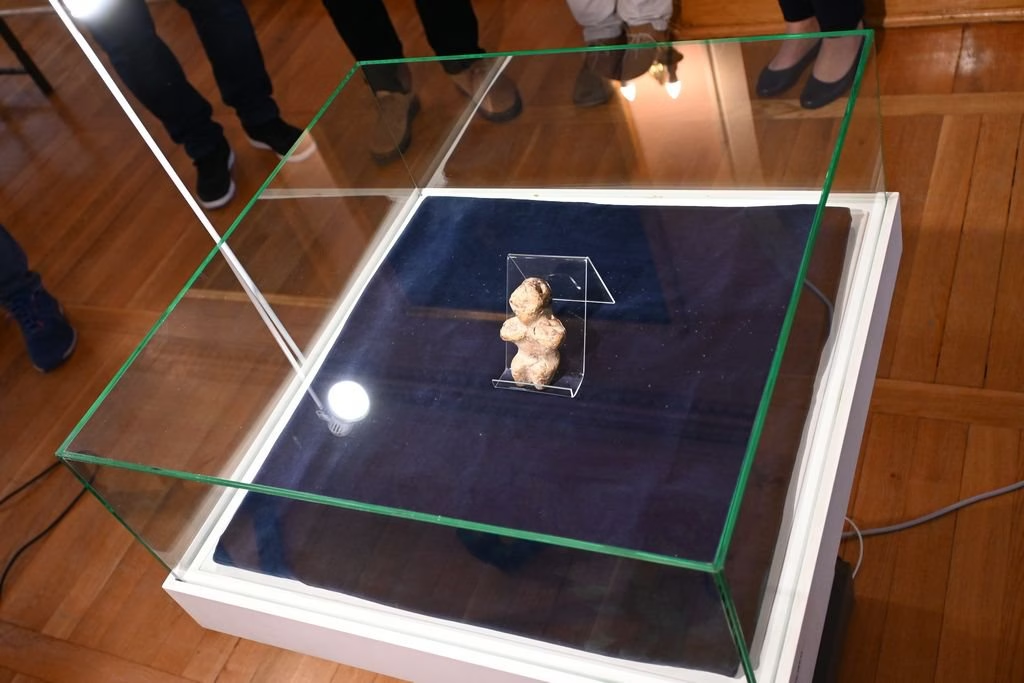A stunning archaeological discovery on Poland’s Baltic coastline has captivated historians and archaeologists alike. A 6,000-year-old limestone figurine, now known as the Kołobrzeg Venus, has been unearthed near the town of Kołobrzeg, offering a rare and fascinating glimpse into the symbolic world of Neolithic communities in Northern Europe.
A Chance Find with Tremendous Historical Value
The figurine was accidentally discovered in December 2022 by a local farmer working near the Parsęta River. Recognizing its potential significance, the artifact was quickly handed over to Waldemar Sadowski of the Parsęta Exploration and Search Group, operating under the Friends of the Polish Arms Museum. Its authenticity was later confirmed by archaeologist Marcin Krzepkowski from the Relicta Foundation. Authorities and museum officials were promptly notified.
Radiocarbon analysis has confirmed that the artifact dates back to the Late Neolithic period, around 4,000 BCE — a time marked by the rise of agriculture, settled communities, and complex spiritual beliefs.
Symbolism Carved in Stone
Standing about 12 centimeters tall and carved from limestone, the Kołobrzeg Venus features pronounced feminine attributes such as wide hips and full breasts, long associated with fertility, motherhood, and possibly goddess worship. The absence of facial features points to a symbolic rather than individual representation, emphasizing the figurine’s likely role as a ritual object or cultural emblem. Subtle surface markings may hint at ceremonial use or spiritual significance.
A Unique Discovery for Poland’s Archaeological Landscape
While similar “Venus” figurines have been found throughout prehistoric Europe — including the famed Venus of Willendorf in Austria and the Hohle Fels Venus in Germany — the Kołobrzeg Venus is unprecedented north of the Carpathian Mountains. This makes the discovery particularly important in understanding Neolithic life in what is now northern Poland.

Redefining Neolithic Coastal Communities
Experts believe the figurine may have served as a protective talisman, ritual object, or personal charm—suggesting that even early coastal settlements engaged in complex spiritual and artistic practices. This challenges long-standing assumptions that such symbolic expression was limited to large farming societies or more urbanized cultures.
The figurine also reflects the interconnectedness of fishing, farming, and trading cultures along the Baltic Sea during the Stone Age, painting a richer picture of prehistoric European life.
What Comes Next?
Advanced techniques like microscopic analysis and 3D scanning are currently being used to study the figurine in greater detail. Future archaeological excavations in the Kołobrzeg region may uncover additional artifacts, helping researchers further piece together the beliefs and daily lives of Neolithic coastal communities.
Museum Exhibit Update: From Weapons to Prehistory
In light of this discovery, the Polish Arms Museum in Kołobrzeg is updating its permanent exhibition to include prehistoric artifacts. The Kołobrzeg Venus will take a prominent place as one of the oldest and most culturally significant objects in the collection — bridging the gap between ancient beliefs and modern understanding.
Cover Image Credit: Muzeum Oręża Polskiego w Kołobrzegu




